Looking into the ongoing changes in the food industry, online delivery has been enjoyed by many customers. Cloud kitchens are also one of those that are solely dependent on online delivery systems. However, if they want to increase their customer base they can develop a cloud kitchen app.
The surge of cloud kitchens is popular among restaurant owners. Most of them are shifting their focus from traditional dine-in setups to delivery-only businesses.
Cloud kitchens offer numerous advantages, including lower operating costs, minimal startup expenses, and reduced maintenance needs. This makes them an appealing option for restaurateurs looking to streamline their operations and maximize efficiency in running their businesses.
As a result, cloud kitchen apps are now being recognized as the smartest way forward in the restaurant industry.
Table of Contents
What is the Blue Apron Cloud Kitchen Apps?
Blue Apron has pioneered the home meal kit delivery service provider. They use the cloud kitchen business model.
The business does not have a physical space where customers can eat. Instead, all orders are placed online through the Cloud Kitchen app.
Cloud kitchen apps typically refer to commercial facilities purposely built for the delivery of food production. This business is only on online platforms to manage orders, coordinate kitchen operations, and handle delivery logistics.
Where Cloud Kitchen App Market Stand Currently?
The cloud kitchen app market is getting the hype because of the food delivery popularity. We all like convenience and most of the half of the Americans rely on food deliveries. Most restaurant owners need to expand their business, they need to decide on what business model can maximize the revenue in a cost-efficient way.
The expected cloud kitchen app market size is on an annual growth rate of 12.4% from 2021 to 2028. (Source: Grand View Research)
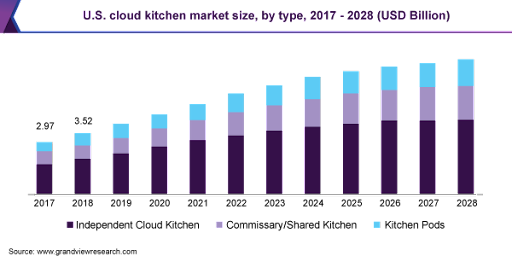
(Source: Grand View Research)
Types of Cloud Kitchen Apps Business Models
Even in the cloud kitchen business model, there are also many ways a restaurant owner can operate. So, before you decide to develop your cloud kitchen app make sure you know what is the purpose of it.
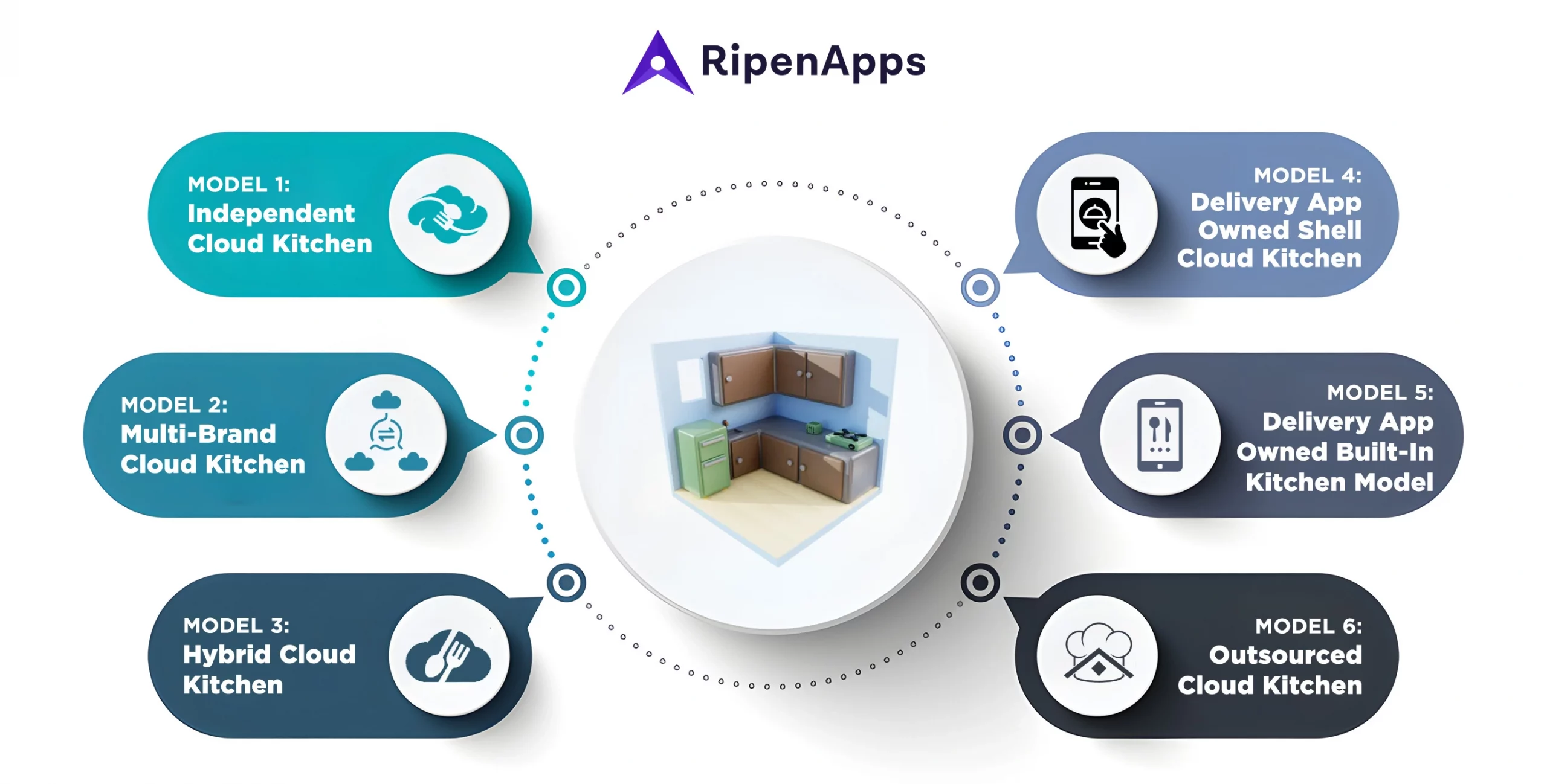
Model 1: Independent Cloud Kitchen
- These kitchens focus on one type of food.
- They don’t have a place to sit or a store, just the kitchen.
- You can only order online, and they only do delivery.
- They might use services like DoorDash and their apps.
Model 2: Multi-Brand Cloud Kitchen
- There’s just one kitchen that serves several different food brands, each focusing on a unique type of cuisine. This setup helps save costs.
- The goal is to serve everyone within a 5-6 km radius, especially in areas with few restaurants.
- These kitchens don’t have seating or a storefront, only a kitchen.
- They only take orders online and only deliver.
- They might use services like Uber Eats and their apps to handle orders.
Model 3: Hybrid Cloud Kitchen
- This is a combination of a takeaway restaurant and a cloud kitchen. Customers can watch how the food is made if they like.
- There’s a kitchen and a storefront, but no place to sit.
- They have one kitchen and one brand.
- The menu changes depending on the season and what customers want.
- They mainly use services like Grubhub, DoorDash, and their apps to handle orders.
Model 4: Delivery App Owned Shell Cloud Kitchen
- There’s just one kitchen that serves multiple brands.
- There’s no physical store; all orders are placed online.
- The kitchen focuses only on cooking and uses third-party delivery services because they don’t have a mobile app.
Model 5: Delivery App Owned Built-In Kitchen Model
- A kitchen serves multiple brands.
- There’s a storefront, for customers to visit.
- The restaurant manages the menu, while a delivery app company handles everything else.
- The delivery app company also provides guidance and expertise to the restaurants.
Model 6: Outsourced Cloud Kitchen
- In this setup, both the cooking and delivery are outsourced.
- Chefs mainly add final touches to pre-prepared food.
- Orders are received through call centers, third-party platforms, and the cloud kitchen’s apps and websites.
- An aggregator handles the food delivery to customers.
How to Develop Cloud Kitchen Apps like Blue Apron?
Developing cloud kitchen apps like Blue Apron could be a big project, but it is possible with the right team and plan. There is a growing demand for these services because people are ordering food online.
For a successful cloud kitchen app, you will need a great team of developers and a solid plan. Let’s dive into the steps you take while cloud kitchen app development.
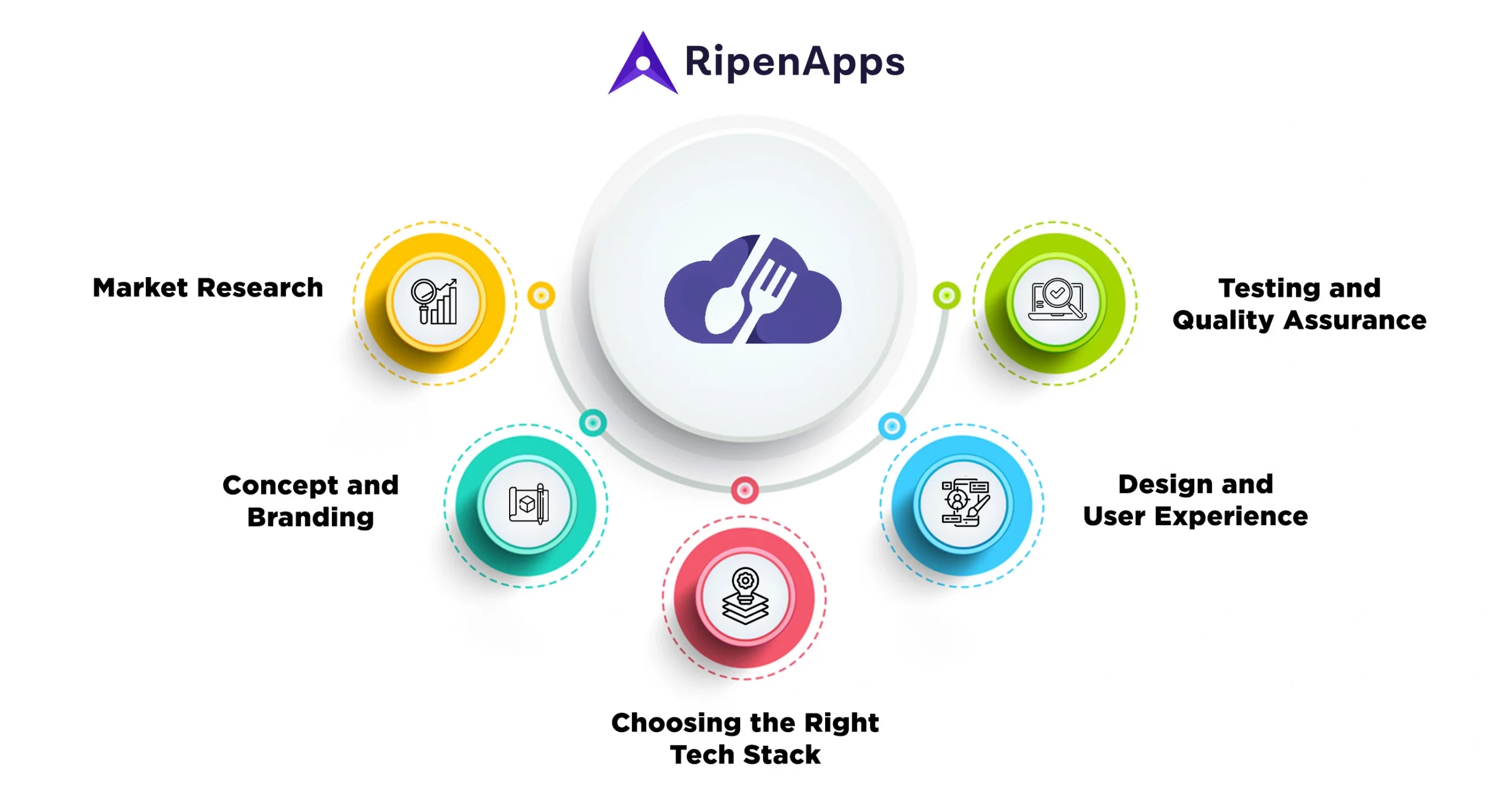
1. Market Research
The first step is always to research the market you want to target. It helps you understand who the target audience wants to use cloud kitchen apps.
For a better understanding, it is great to research what similar apps are out there on the market. This market analysis will give you a good understanding of what you are getting into.
2. Concept and Branding
Once you have gathered all the information about the market, it is time to think about what your cloud kitchen app will offer. It will help you understand the modules you should put in your application.
Other points will help you understand how you should brand your app to attract customers, and also special features that will make it stand out in the market. This phase is all about putting yourself on the map of the food industry because it will attract more customers.
3. Choosing the Right Tech Stack
To create a strong cloud kitchen app like Blue Apron, you need the right set of technology tools. This includes picking the best databases, development tools, and programming languages. Here’s what you might use:
- For building the parts of the app that users see and interact with (front-end), you might use technologies like React, Angular, HTML, CSS, and JavaScript.
- For the behind-the-scenes work (back-end), you might use languages and frameworks like React Native, Swift, Node.js, Ruby on Rails, Django, Express.js, and Flask.
- You’ll need a database to store all the information, such as MySQL, PostgreSQL, or MongoDB.
- To host your app online, you might use services like AWS or GCP (Google Cloud Platform).
- For handling payments securely, you could integrate with platforms like Stripe, PayPal, or Braintree.
- If your app involves maps or location-based services, you might use APIs like Google Maps or Mapbox.
- To track how your app is performing and analyze user behavior, you might use tools like Google Analytics or Mixpanel.
Choosing the right combination of these tools will help you build reliable and efficient cloud kitchen apps.
4. Design and User Experience
It’s really important for your app to wow users right from the start. You want them to be impressed as soon as they open it. This means making sure the app is easy to use, with clear menus and a design that’s pleasing to the eye.
Imagine being able to swipe through different types of food and seeing mouthwatering pictures that make you want to order right away! That’s the kind of experience you want to create for your users.
5. Testing and Quality Assurance
Before and after launching your app, it’s really important to test it thoroughly. You want to make sure there aren’t any bugs or issues that could create problems in the user experience.
A great food delivery app development company can help with this by providing quality assurance services. They’ll carefully check every part of your app to find and fix any problems. This ensures that when your app is released, it works perfectly and gives users a great experience.
Top Reasons to Consider Developing a Cloud Kitchen Apps
Cloud kitchens are better than regular restaurants because they concentrate mainly on cooking food while keeping administrative and logistical expenses low. And developing your cloud kitchen apps like Blue Apron can be a great step.
There are many reasons you should consider before you develop cloud kitchen apps. Here are some advantages explained:
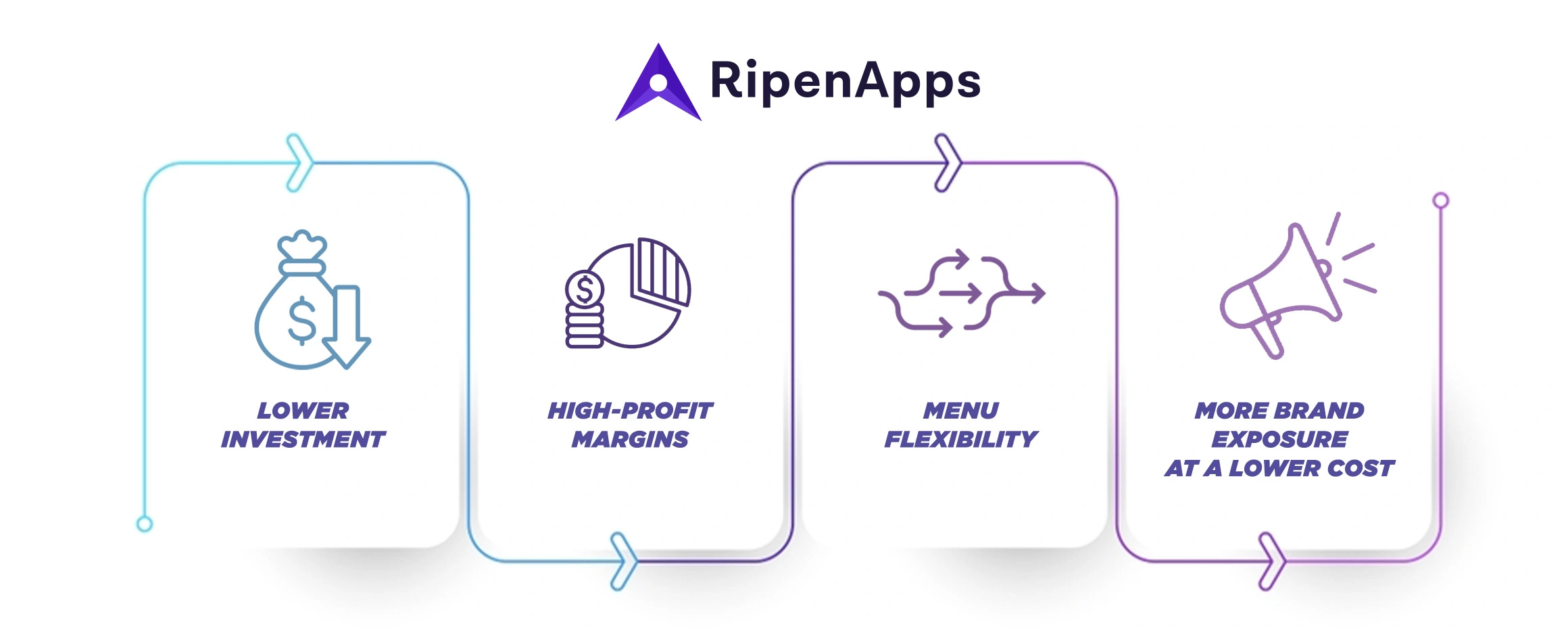
1. Lower Investment
A cloud kitchen doesn’t need to worry about setting up a fancy storefront, so there’s no need to spend a lot on decorations, dishes, signs, or finding the perfect location. If you decide to open one then cloud kitchen apps like Blue Apron can be a great add-on for your startup.
A mobile app can lower the cost for your cloud kitchen startup because you don’t have to deal with the whole maintenance of a place where your customer would sit. This means you can get your kitchen running in just a few weeks.
Read Also: Factors that Will Determine Mobile App Development Cost in 2024
2. High-Profit Margins
Traditional restaurants often have a hard time making money because they have to deal with lots of expenses, like paying staff, high utility bills, and property taxes. Cloud kitchen apps like Blue Apron can help you lower these expenses, and you also don’t have to worry about these things.
A cloud kitchen business owner can get by with just a few workers, usually a chef or two, which helps them make more money. Plus, if the kitchen serves multiple delivery-only brands that use similar ingredients, they can save even more money because they can buy things in bulk.
Read Also: Major Revenue And Engagement Factors For A Food Delivery App
3. Menu Flexibility
Using a web or app-based ordering system in cloud kitchens gives them the freedom to adjust their menus and prices easily. If customers don’t like a dish, they can remove it without worrying about printing new menus, saving money. This also helps cut down on food waste.
A cloud kitchen app helps in maintaining many aspects, and one of them is menu flexibility. Because of better time management, the cloud kitchen owner can focus on the menu. They can renovate their menu frequently from the feedback.
4. More Brand Exposure at a Lower Cost
Cloud kitchen business model mostly uses the digital marketing strategy to market their brand. Restaurant owners can reach to larger audience with the help of an app for cloud kitchens.
Must-Have Features on Cloud Kitchen Apps
1. Secure Payment Gateway
Usually, in cloud kitchen models customers tend to use prepaid payment methods for their orders. So, a secured payment gateway is mandatory to integrate with your cloud kitchen app.
You need to integrate strong security measures for the payment gateways for your cloud kitchen app to protect yourself from any kind of intrusions or cyber breaches.
2. Cross-Platform Development
For a cloud kitchen app like Blue Apron should be available on multiple platforms. So, you need to develop a loyalty app for Cloud Kitchen, which is compatible with different platforms, like iOS and Android. And to make it cost efficient is to use cross-platform app development.
3. Real-Time Delivery Route
Providing your customers a real-time delivery tracking is a must-have feature. In a cloud kitchen app, this feature helps in time management. And that will help in customer satisfaction because the routing algorithm delivery crew can choose the most effective route to delivery.
4. Inventory Control
In your cloud kitchen app, you can maintain the orders for the inventory. You can manage how many maximum orders it takes and then go to out of stock when it reaches the limit.
However, it can give the cloud kitchen owner a look at the supply and demand. Because if you have any shortage of food supplies then the owner can manage the future planning.
5. Data Analytics
Integrating data analytics features will always bring success to cloud kitchen app development. It helps in collecting data from consumer behavior, popular menu preferences, and trendy culinary trends. Those data give you a better for you to make informed decisions that improve the overall functionality and user experience of your cloud kitchen apps.
6. Voice Search and Commands
All the mobile applications integrate voice search. So, if your cloud kitchen apps also have this people do not need to find the dishes by typing them into the app. They can just click the voice search button and command the app to find what users would like to through it.
7. Augmented Reality Menu Preview
Implementing augmented reality in your cloud kitchen apps can bring more customers to your online store. With an augmented reality feature, customers can virtually get a look at dishes, providing them with valuable insights and improving the decision process. Because it will help in engagement and a visually appealing experience.
From the customer’s point of view, they can interact with your menu in a fun and immersive way. By helping them to make more informed choices and increasing their excitement about the offerings.
8. Predictive Ordering
Predictive ordering features use the previous ordering algorithm of the customers. It helps in suggesting similar menu items that customers usually order as well as giving options that have similar properties.
By anticipating what customers might like to order next, this feature will give cloud kitchen apps an improved user experience.
9. AI Chatbot
Chatbots are a must-have feature in cloud kitchen apps because they give instant assistance to customers. An AI-powered chatbot will help in answering queries, taking orders, and providing recommendations.
AI chatbots offer customers round-the-clock support and personalized interactions, that ultimately upgrade the user experience. It also helps cloud kitchen owners focus on further tasks.
10. Review and Ratings
Allow customers to leave reviews and ratings for the dishes they have ordered. This helps in building transparency and trust. With valuable feedback, it can be helpful for cloud kitchen apps and restaurants to improve the quality of service.
11. Customizable Menus
This feature enables customers to customize their orders according to their preferences, such as toppings, sauces, or portion sizes. It helps in enhancing user satisfaction by allowing cloud kitchen apps to tailor their meals to their liking, leading to increased customer loyalty and engagement.
12. Advanced Search and Filters
Implement strong search and filtering options that allow customers to quickly find specific dishes or narrow down their choices based on criteria such as cuisine, dietary restrictions, or price range. This feature simplifies the ordering process and improves user experience by making it easier to navigate through the menu.
13. Catalog Management
This feature enables kitchen administrators to efficiently manage and update their menu offerings, pricing, and descriptions. Catalog management ensures that the app always displays accurate and up-to-date information, preventing confusion or discrepancies for customers.
Cost to Develop Cloud Kitchen Apps Like Blue Apron
The cost of developing cloud kitchen apps like Blue Apron varies based on the features you want. Typically, building both a cloud kitchen app and a website for a restaurant can cost from $10,000 to $100,000 or more.
However, the exact cost depends on the features and the mobile app development company you have partnered with. Partner with the best app developers for startups to ensure you avoid mistakes, scale your brand, and succeed in your cloud kitchen business with confidence.
Final Thoughts
Launching your cloud kitchen apps can be a challenging task. The only thing you want is the right plan and strategy to make your project achievable.
There are multiple reasons why cloud kitchen app development can be a successful step in growing the food industry. Because if your cloud kitchen has a planned menu and efficient delivery, it will be a convenient way to increase revenue for the business. Many factors contribute to building a successful cloud kitchen business. You just need to hit the right spot with your cloud kitchen app development.
FAQs
Q1. How do I create a cloud kitchen app?
- Then start the development process, like partnering with a mobile app development company.
- After that, it is the launching time for your cloud kitchen app.
- Further, you just need to run quality testing on your app, take feedback, and make the application better.
It is essential to consider user experience, backend infrastructure, and integration with third-party services like payment gateways and delivery platforms.
Q2. How much does it cost to start a cloud kitchen app?
The whole cost to develop your cloud kitchen app will depend on various factors like app features, tech stack, and app development company. On average, the initial investment could range from $10,000 to $100,000 or more.
It’s important to budget for app development, marketing, kitchen setup, and ongoing operational expenses.
Q3. What technology is required for a cloud kitchen app?
Cloud kitchen apps typically require a combination of front-end and back-end technologies, including programming languages like JavaScript, frameworks like React or Angular for the front end, and Node.js or Django for the back end.
Additionally, databases like MySQL or MongoDB, cloud hosting services like AWS or Google Cloud, and payment integration services are essential components.
Q4. What challenges come with establishing cloud kitchens?
Just like any new technology, setting up a ghost kitchen has its share of potential downsides or obstacles in addition to the advantages. Here’s a look at them:
- Depending on third-party delivery apps
- Managing on-demand staff effectively
- Facing competition in a busy online market
- Ensuring food safety and maintaining quality
- Meeting compliance with local food safety rules

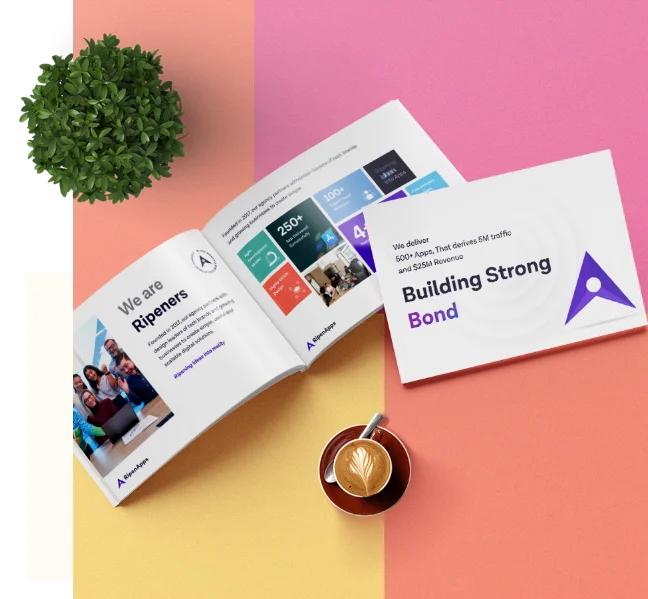
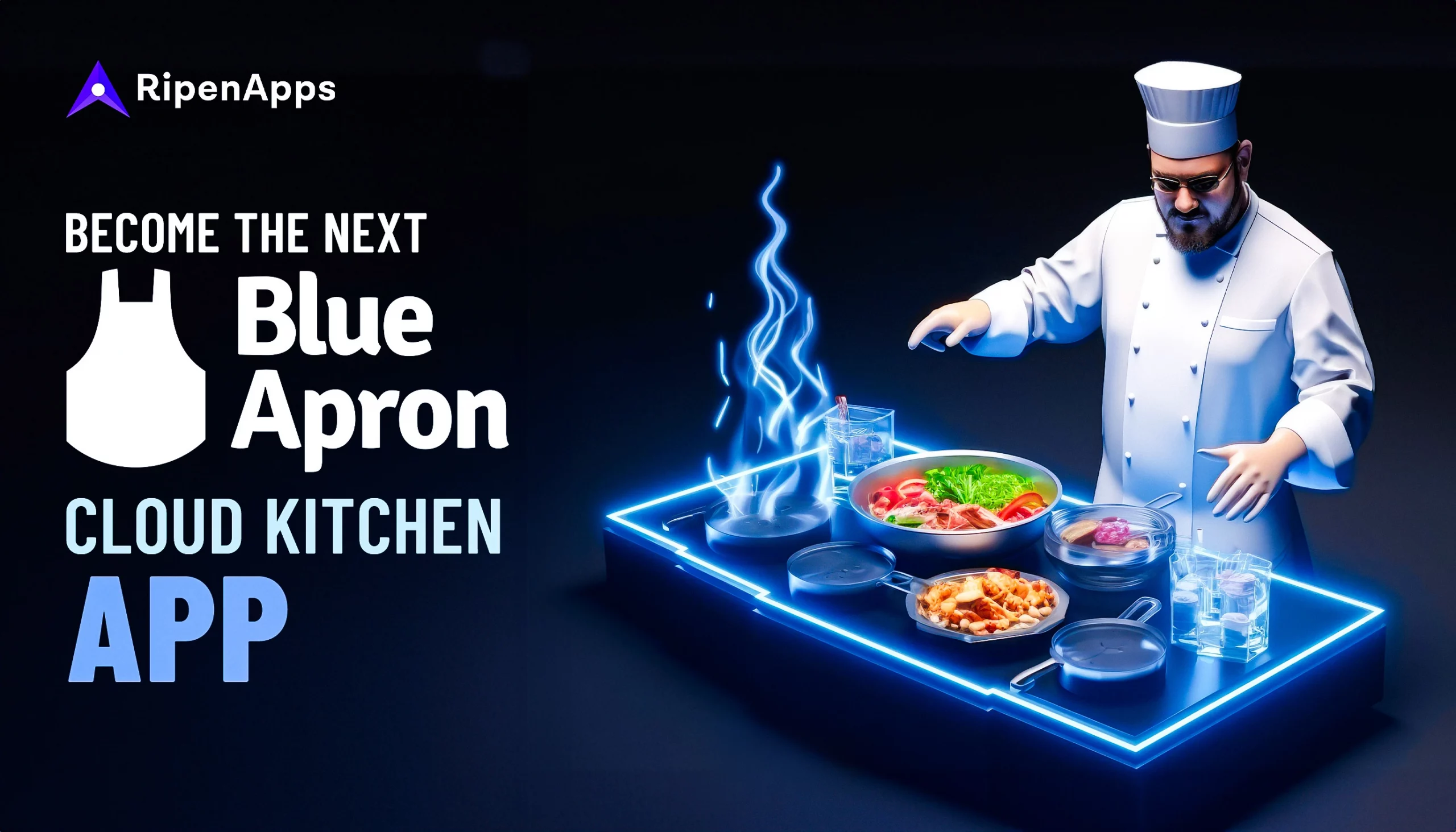






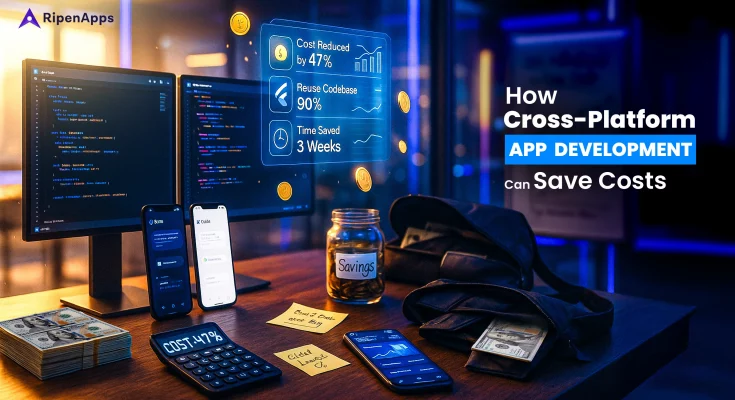
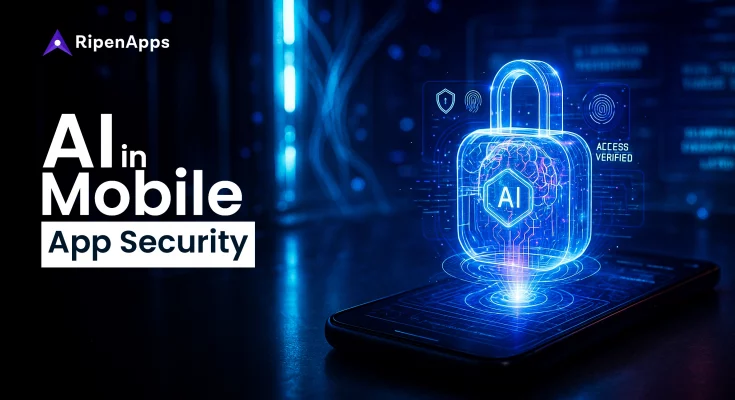
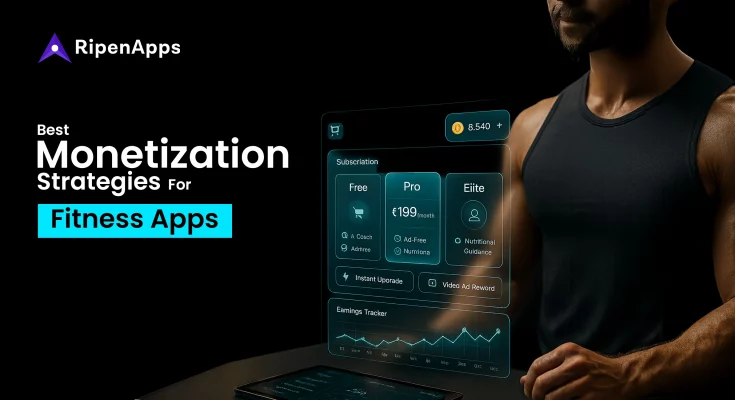

 India
India USA
USA Australia
Australia Canada
Canada UK
UK UAE
UAE
